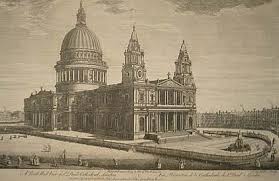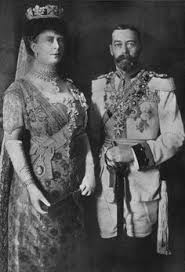This seemed so simple to start with, and turns out to be full of twists and turns.
There are rather faded entries, in difficult to decipher hand-writing, in John Roche O’Bryen’s family bible which list all his 16 children, the dates and times of the births, and where they were. It also lists the god-parents. The entry for Cecilia Agnes, the ninth child, and seventh daughter is as follows:

9. Cecilia Agnes [O’Bryen] at Bellvue Novr 17th 1846 10 A.M Gdfather, Wm Jones Esq, Pike Inn, Glamn Wales. GdMother, Miss Cecile De Lonmery, Bath. Died at The [French] Convent Belgium Janr 5th 1856 at 9 yrs & was buried in the Parish Church attended at her grave 320 persons who thanked God that she was taken to her [chosen end] whilst innocent to God
I’m almost completely sure that Miss Cecile De Lonmery, is in fact Countess Cecile de Sommery. Almost all of that generation’s godparents appear to be wealthy, landed, titled, or Catholic, or in a number of cases at least three out of four.
Willie Leigh 1829-1906 [Basil O’Bryen’s godfather – child 10] inherited the Woodchester estate in 1873, which his father had bought for £ 170,000 in 1845. He built the Church of the Annunciation, and Woodchester Priory for the Dominicans shortly after their arrival in October 1850. It housed the noviciate of the Dominican order in England for more than 100 years; they only left in the 1960s when the buildings became too expensive to maintain. The monastery was demolished in 1970 leaving a small contingent of Dominicans to look after the parish.
Philip O’Bryen’s [ child 13] godfather Simon Scope came from a recusant family had had acquired their estates in Wensleydale in the 12th century, and still owned Danby Hall into the 1960’s.
But back to the Countess, this is her obituary in The Tablet.
THE COUNTESS CECILE DE SOMMERY.

The Requiem Mass for the Countess Cecile de Sommery took place on Monday at the Franciscan Friary, Clevedon, and the body was then , conveyed to Bath for interment in the family vault [the Eyre Chantry] in the Catholic cemetery at Perrymead, where the remaining portion of the service was conducted. The grand-nephew of the deceased, the Marquis de Sommery, and Mr. Thomas Eyre, and his wife, Lady Milford, were the only relatives present. His Royal Highness the Duke of Madrid, head of the House of Bourbon, telegraphed an expression of sympathy with the late Countess’s relatives. The Countess Cecile de Sommery, Chanoinesse of the Royal Order of St. Anne of Bavaria, whose death occurred at Clevedon, Somerset, on April 26, was born in London in the year 1804. Her parents. Armand de Mesniel, Marquis de Sommery, and Cecile Riquet de Caraman, came over to England with the Bourbons during the French Revolution. Her mother was among the ladies last presented at the Palace of Versailles to Louis XVI. and Marie Antoinette. One of her sisters married Count Eyre, father of the Catholic Archbishop of Glasgow. R. I. P.
The above text was found on p.26, 13th May 1899 in “The Tablet: The International Catholic News Weekly.” Reproduced with kind permission of the Publisher. The Tablet can be found at http://www.thetablet.co.uk .
So far, all very factual, but fairly astonishing all the same. An elderly single lady being buried in Bath, whose mother met Marie Antoinette, and one of whose nephews was the first Catholic archbishop of Glasgow since the Scottish Reformation, and one of the first patrons of Celtic FC. Another nephew, William Eyre was the rector of Stonyhurst between 1879 -1885, and would have been so for almost the entire school careers of both Ernest and Rex O’Bryen there. So Cecile de Sommery’s nephew was the headmaster to her god-daughter’s youngest two half-brothers, although she [Cecilia O’Bryen] had been dead for eleven years when the elder of them was born.
The sister who married Count Eyre, father of the Catholic Archbishop of Glasgow was Augustine Cécile Pulcherie de Sommery (1797 – 1876). They married in 1828, three years after the death of his first wife Sarah Parker (1790 -1825). John and Sarah had five sons, four of whom became priests, and four daughters, three of whom died young, in the eight years of their marriage. So Augustine would have been very much a mother to all the children, who were all under nine when she became their step-mother.
John Lewis Eyre (1789-1880), Count Eyre, was an entrepreneur and one of the founding directors of the London and South Western Railway Company, taking for many years a leading part in the development of that railway. His title was a papal one, granted by Pope Gregory XVI, who created him a Count of the Lateran Hall and Apostolic Palace in 1843. According the Burke’s “A Genealogical And Heraldic Dictionary Of The Peerage And Baronetage Of The British Empire” 1845. ” The dignity of a Count of the Lateran Hall and Apostolic Palace was conferred by the sovereign pontiff Gregory XVI on Count Eyre the brevet or patent is dated at St Peter’s Rome under the seal of the Fisherman the 3rd day March 1843 and in the thirteenth year of his pontificate signed A Cardinal Lambruschini.” Pius IX made the title hereditary in 1847, it was inherited by the Archbishop in 1880.
The best known of his four priest sons is Charles Eyre, the first post- Reformation Roman Catholic Archbishop of Glasgow. the others being John, a priest in Newcastle, William Eyre S.J., Rector of Stonyhurst and Vincent Eyre, parish priest in London, first of St Mary’s Cadogan Street and then St Mary’s,Hampstead.
Another nice touch, St Mary’s Cadogan Street was the church that Bishop Bidwell was parish priest of, for thirteen years [from 1913 – 1930], and St Mary’s,Hampstead was, in part, founded by Joseph Francis Lescher (1768 – 1827).
In 1894, Archbishop Eyre invited the Sisters of Notre Dame to come from the Mother House in Liverpool to establish a community in Glasgow. The Notre Dame Training College was opened in 1895 at Dowanhill. Joseph Francis Lescher’s great granddaughter Mary Adela Lescher ( 1847 – 1926) [Sister Mary of St Wilfrid] was its first Mother Superior.
She was Harriet Grehan’s niece, and Harriet Grehan was John Roche O’Bryen’s step-mother-in -law. She was also Fanny Lescher’s niece, she [Fanny} was another nun – [Sister Mary of St Philip] who was the Mother Superior at Notre Dame in Mount Pleasant,Liverpool.
It is still a mystery why Thomas Eyre’s wife still called herself Lady Milford after her first husband’s death in January 1857. She and Thomas married in 1861, she was Lady Anne Jane Howard, daughter of William Howard, 4th Earl of Wicklow, so was a Lady in her own right. But it does seem odd that she still called herself Lady Milford years after her first husband’s death, and only three years of marriage [ his second after a twenty eight year first marriage].
The Eyres were an old English recusant family, at Newbold, Derbyshire and Lindley Hall, Leicestershire, very wealthy, and owned a substantial amount of land in Ireland, as well as in England. Thomas Eyre had a large Georgian house at Uppercourt, Freshfort, county Kilkenny, . In the 1870s he owned 762 acres in county Tipperary, 1,909 acres in county Kilkenny and 164 acres in county Waterford.
In 1891, he and Lady Anne were living at 16 Hill Street, in Mayfair, just off Berkley Square. It was a very grand household, with a butler, two footmen, two ladies maids, two housemaids, a kitchen maid, and two scullery maids, and curiously on the night of the census, no cook living in.He was succeeded by his cousin Stanislas Thomas Eyre in 1902, and left the modern day equivalent of £ 120m.
It’s all a very small world

